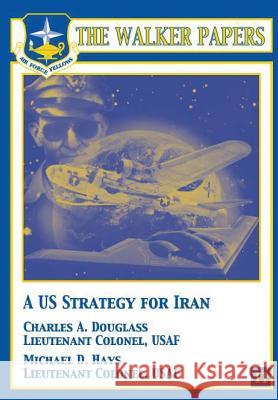A U.S. Strategy for Iran » książka
A U.S. Strategy for Iran
ISBN-13: 9781478380290 / Angielski / Miękka / 2012 / 126 str.
This study uses the lens of history to elucidate barriers that have confounded a successful US strategy for Iran. This strategy blends pressure and engagement to overcome these barriers. Iran's perceptions and patterns have historical roots in a sense of Persian greatness, resentment of foreign influence, strategic Persian-Shiite loneliness, and the emergence of pragmatic national interest replacing revolutionary ideology. Analysis further demonstrates how Iran's unique characteristics, such as the populace and nature of the government, portend strategic vulnerabilities which can be used by US strategic planners. Recent US policies for Iran are evaluated to understand US perceptions and how these have contributed to an inability to deter Iran from developing nuclear weapons, proliferating terrorism, and destabilizing the region. A proposed strategy framework expounds upon key assumptions and identification of Iranian centers of gravity. A novel planning construct is created to develop the short- and long-term strategy for US relations with Iran. This study outlines a strategy based on potential vulnerabilities of Iran created by its history and the nature of the country itself. The short-term recommended strategy consists of a prioritized list of six components for creating pressure on Iran. The result of this pressure portends changes in Iran's behavior. Public diplomacy and a strategic communications effort are cross-cutting elements that tie together the components of the short-term strategy. Despite the proposed use of pressure, there are engagement aspects that allow exploitation of positive opportunities created by changes in Iran's behavior. The longterm strategy is comprised of a blend of changed assumptions and tailored goals implemented at a rate tied to improvements in US and Iranian relations. The strategy proposal outlined in this study should be implemented immediately to take advantage of current opportunities. Air University Press, Walker Papers No. 11
Zawartość książki może nie spełniać oczekiwań – reklamacje nie obejmują treści, która mogła nie być redakcyjnie ani merytorycznie opracowana.











